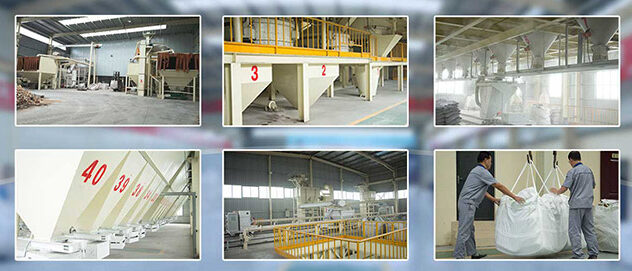What is the bulk density of refractory castables? This is mainly based on the specific construction site and high-temperature resistance requirements. The preparation of refractory castables is customized according to the index requirements provided by users. These indicators mainly include refractoriness, material chemical composition, bulk density, compressive strength, flexural strength, and so on. Bulk density or bulk density is one of the important indicators, which intuitively reflects the compactness of refractory products and characterizes the mass of refractory materials per unit volume. It is an important measure of the quality level of refractory raw materials and dense refractory products.

The Significance of the Bulk Density of Refractories
Bulk density is the ratio of the dry mass of the refractory material to the total volume. The higher the volume density, the higher the density. The bulk density of the material has a significant effect on many other properties, such as porosity, strength, corrosion resistance, load softening temperature, wear resistance, thermal shock resistance, etc. For lightweight thermal insulation materials, such as thermal insulation bricks, light weight castables, etc., the bulk density is also closely related to its thermal conductivity and heat capacity. Generally speaking, the bulk density of the material is high, which is beneficial to its strength, corrosion resistance, wear resistance, and load softening temperature.
Therefore, with regard to the volume density of refractory castables, each manufacturer has its own standards. In order to increase the bulk density of refractory castables, a reasonable ratio of multi-stage particles should be adopted, which should meet the requirement of “large at two ends and small in the middle”. That is, under the premise of not affecting the performance of refractory castables, adding fine powder matrix or using silicon powder to replace part of the binder material, reducing the amount of water added to increase its bulk density.
Bulk Density of Refractory Castables
The bulk density of refractory castables is different depending on the location of use. It is mainly divided into two parts, namely dense refractory castable and light refractory castable. Dense refractory castables are used for parts that are exposed to high temperature, molten slag, scouring, and thermal shock stress. The use of castables with high bulk density can improve structural strength, wear resistance, slag penetration resistance, thermal shock resistance, etc. Lightweight refractory castables are only used for the material of the thermal insulation layer close to the furnace shell, with the main purpose of thermal insulation. Its strength is low, density is small, porosity is high, and it can’t touch slag or chemically corroded parts.
The density of dense refractory castables configured by different materials is different. For example, the bulk density of clay refractory castables is 2.1~2.2 g/cm3. The bulk density of high-aluminum refractory castables is generally 2.5~2.85 g/cm3, which increases with the increase of aluminum content. The bulk density of clay low cement castable is 2.2~2.3g/cm3. The bulk density of corundum low cement castable is 3.0~3.1g/cm3, etc.
The lightweight refractory castables configured by different materials are different. For example, the bulk density of lightweight floating bead castables is 0.6~1.0g/cm3. The bulk density of the castable prepared with clay porous clinker is 0.8~1.3g/cm3. The volume density of the castable configured with mullite porous clinker is 1.2~1.6g/cm3, etc.
In short, the bulk density of refractory castables depends on the temperature and location of use. For example, the bulk density of high alumina refractory castable is 2.5g/cm3 or 2500kg/m3, which means that a cubic high alumina refractory castable weighs about 2.5 tons. The bulk density of lightweight castables is 0.8g/cm3 or 800kg/m3, representing a cubic weight of 0.8 tons. The volume density of refractory castables is the specific manifestation of bulk density, and the weight of materials required for construction parts can be calculated through this index. Refractory castables will inevitably be lost during the construction process. In order to prepare all the materials at one time, the total quantity can be increased by about 0.5 tons to avoid suspension due to insufficient construction materials.
Refractory Castable Manufacturer and Sales Manufacturer
This is the introduction about the appropriate density of the castable. I hope it will be helpful to you. If you have any other questions, please feel free to contact us. Purchasing suitable refractory materials for the kiln lining, and looking for a suitable refractory lining material solution, the strength of the Rongsheng refractory manufacturer is your reliable guarantee. Our experienced technical team and our advanced refractory production line have won us many return customers and long-term cooperative customers. If you have any questions about refractory materials or refractory lining materials, please contact us or follow our blog.